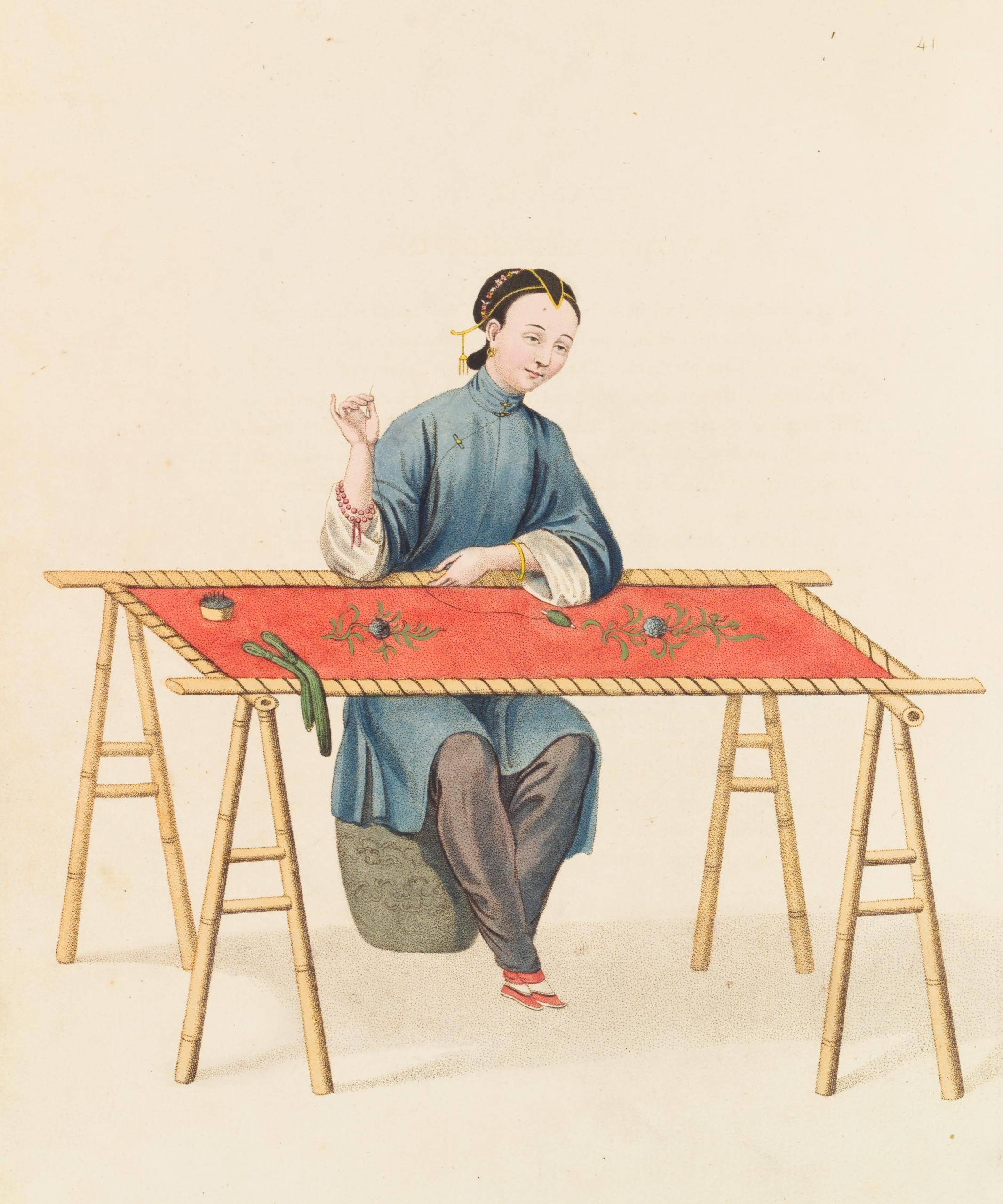Sewing is a craft that has evolved over the years, in terms of its primary uses at the domestic or mass production level, and most importantly, the tools and technologies involved. While its main principle still involves the fastening or attaching objects using stitches, it can be done through the classic and old-fashioned way, through a sewing needle and thread or a specialised sewing machine.
In this article, we will review the history of sewing over the years, in terms of how it started, the improvement of tools over the years, the diverse stitching techniques and explore ways to turn this skill into something beyond a hobby with the help of an experienced tutor.
60,000 years ago
Introduction of a bone-made needle to start stitching
45,000 and 30,000 years ago
Introduction of bone and ivory needles across different locations
25,000 years ago
Introduction of needles with eyelets
1790
Thomas Saint patented the first-ever sewing machine in London
1841
Barthélemy Thimonnier from France created the first ever functional sewing machine
1846
Elias Howe came out with the lockstitch sewing machine
1851
Issac Singer improved on Howe's design to include a with a foot treadle. He later established the Singer Sewing Machine Company
Industrial Revolution
Mass production of clothing through the increased specialisations of sewing machines
20th century-21st century
Increased computerisation of sewing machines, incorporating new technological features

🧵 History of Sewing: When It Started and Its Significance
Sewing is one of the oldest inventions of textile arts; it most probably started in the Palaeolithic era. Even after the invention of spinning yarn or weaving fabric, sewing remained an essential activity to create different types of clothing, jewellery, or specific garments.
Sewing was done by hand until the 19th century, when the sewing machine was invented later in the 20th century. While the advances in technology have allowed mass production of sewn objects until today, sewing by hand remains very popular and practised around the world for different reasons and with different styles.
👚 Practical and Social importance of Sewing
Sewing is, for the most part, a technique to create different pieces of clothing sewn together or hand-sewn clothes, but it has also become a way of creative expression. In the fashion industry, hand sewing is very relevant to form custom dressmaking or haute couture garments.
Nowadays, needlework such as embroidery has become a hobby and another way of expression among different groups.
Embroidery or other types of decorative sewing techniques are also a cultural expression for cultures around the world, where sewing symbols in their clothing portray different aspects of their culture or religion.
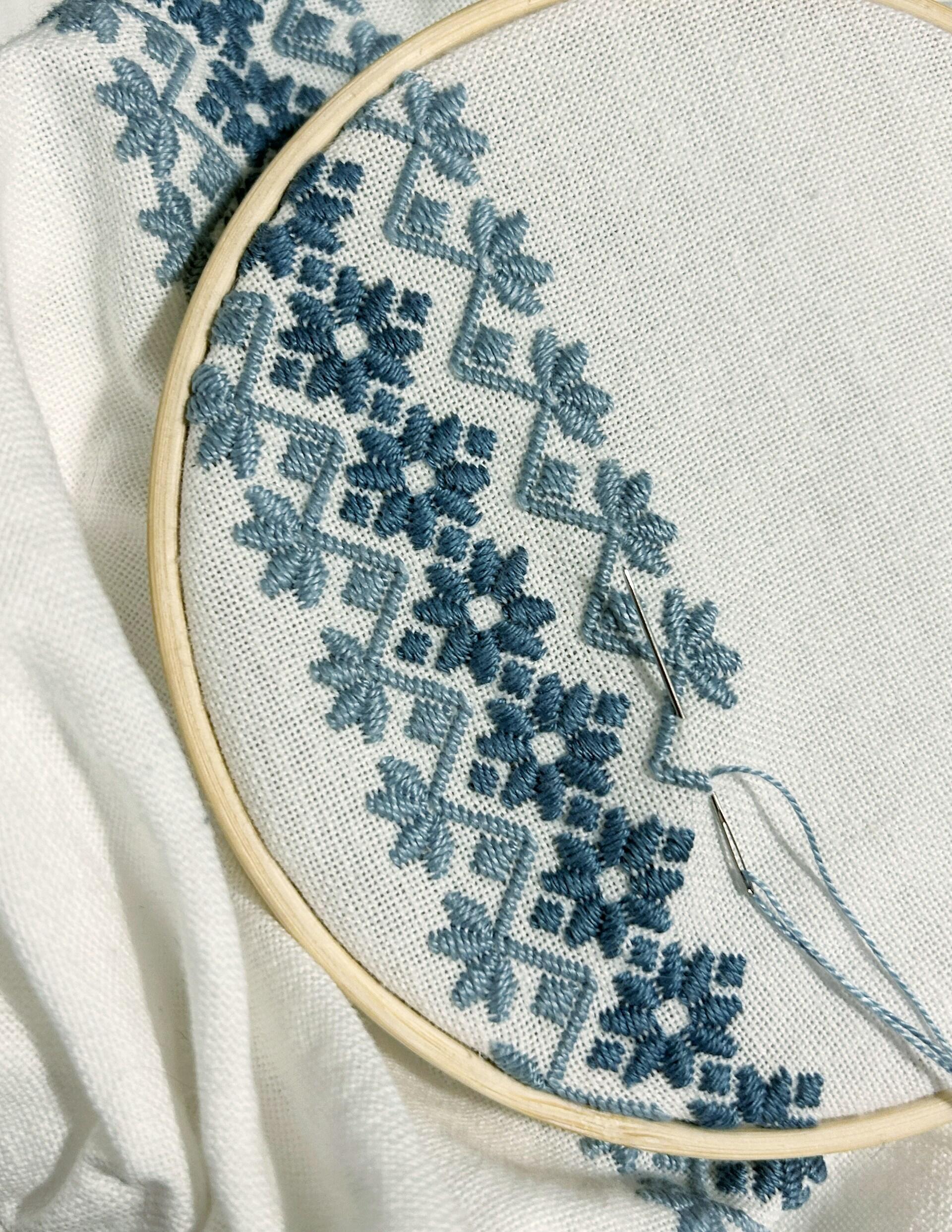
🪡 History of Sewing: Needles
At the very beginning of the history of sewing, bone, antler, or ivory were used as needles, while 'thread' was made of a variety of materials, such as animal body parts or even some fibres coming from plants.
📍Oldest needle
- Dates back around 60,000 years ago
- A human-constructed, animal (most likely bird) bone needle found in South Africa
📍Bone and ivory needles
- Dates back to between 45,000 and 30,000 years ago
- Discovered in Slovenia, Liaoning, China, and Russia, signifying the usage at different locations
📍First needle with eyelet
- Dates to around 25,000 years ago
Although these artefacts originated in varying climates and cultures, they point to a time when modern humans were evolving away from their evolutionary ancestors, especially in terms of practical applications. For instance, the inclusion of ivory as an additional material to make needles and also an eyelet to allow threads to pass through the needles for optimal control and precision.
The needles we use nowadays are made of steel, copper, and sometimes a thin layer of gold or silver to avoid rust or corrosion. The modern embroidery needle, made of combinations of different metals, however, is just the most recent in a long history of needle development.
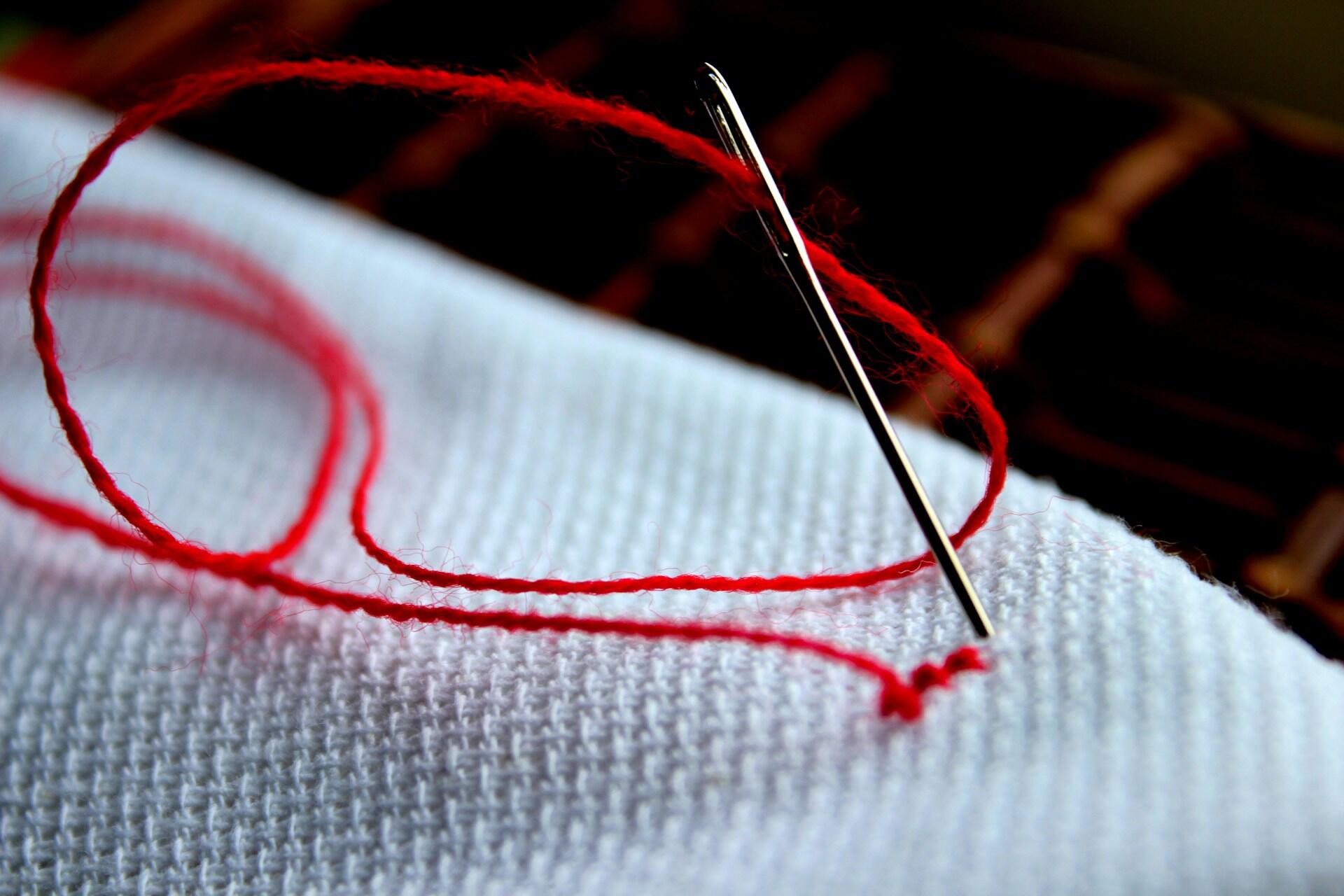

⚙️History of Sewing: Overview of Sewing Machine Invention
With the Industrial Revolution, the production of textiles shifted and allowed the mass production of whole cloth and clothing through the invention of sewing machines.
1790
The first sewing machine design was patented by Thomas Saint
1841
Barthélemy Thimonnier was one of the first to create a simple sewing machine to produce military uniforms for the French army.
1846
Elias Howe came out with the first-ever sewing machine with a needle that moves up and down
1852
Isaac Singer developed a better version of Howe's sewing machine that could operate effectively with a foot treadle and surpass the productivity of a tailor who sews by hand
Late 19th century till today
Introduction and application of specialised sewing machines
🛞 Sewing History Through the Industrial Revolution
This revolutionised the production of clothing for the middle class and also increased the demand for higher-end clothing that was sewn by hand in the UK. This eventually changed the activities that women were involved in.
Did you know that the first Singer factory outside of America was built in Glasgow, Scotland, in 1867? Fast forward to the 20th century, many more Singer factories were established in the UK to meet the growing demand for mass production of textiles through sewing machines.
Sewing was dedicated to women as a household duty for most of the time, but with the Industrial Revolution, the invention of effective sewing machines that could reproduce almost any kind of pattern, especially when women had to join the paid workforce in large numbers, this tradition ended because they had less time to sew.
Advances in industrial technology also allowed the development of synthetic fibres for more resistant or flexible threads.
These changes that lasted from the 19th to the 20th century brought profound changes to the textile industry.
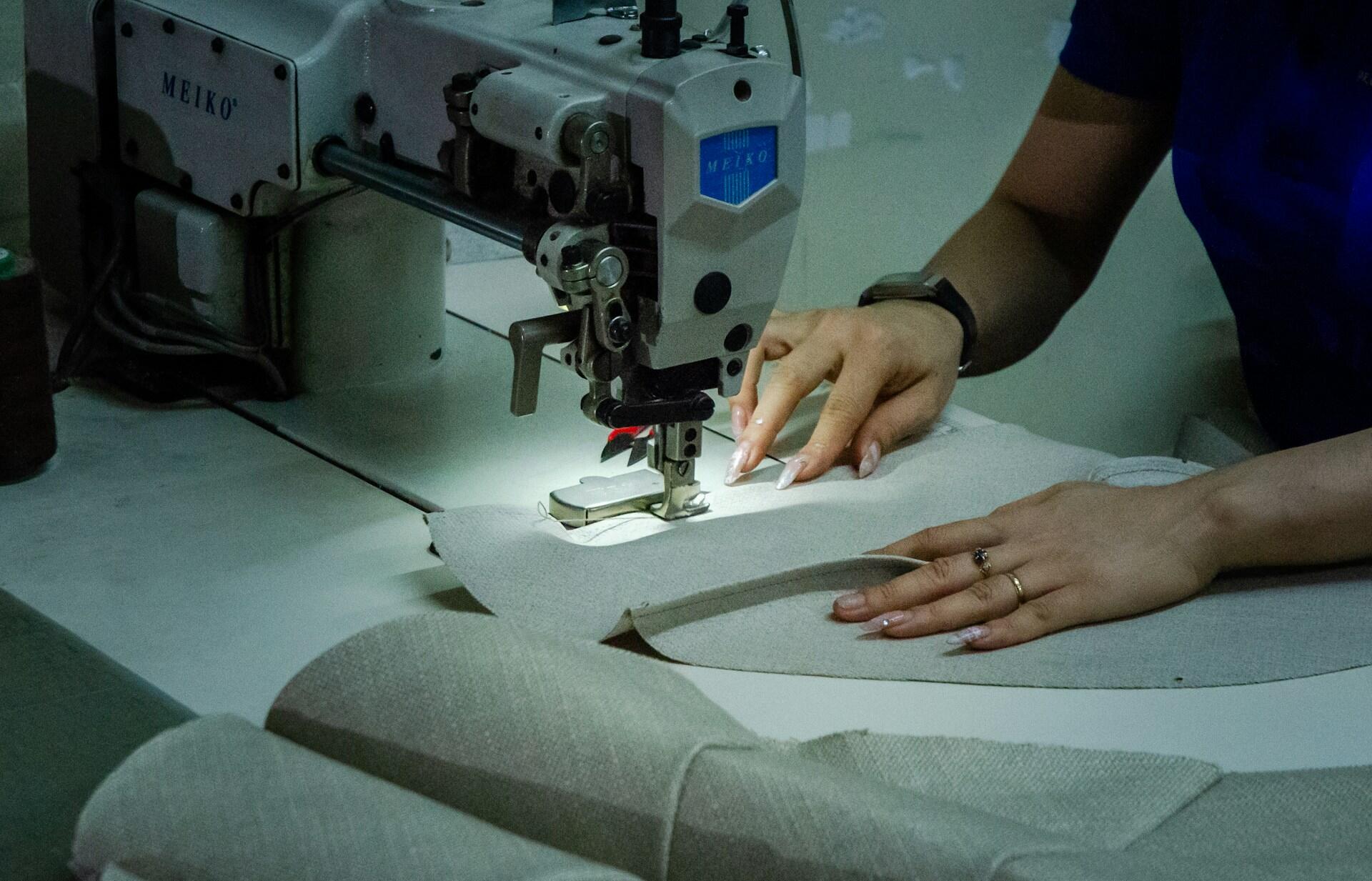
Some of the most common specialised sewing machines that are actively in use globally today include:
- Mechanical Treadle Sewing Machines
- Electronic Mechanical Sewing Machines
- Mini and Portable Machines
- Computerised or Automated Machines
- Flatbed Sewing Machine
- Button Sewing Machine
- Embroidery Machines
- Quilting Machines
- Overlocking or Serger Machines
- Leather Sewing Machine
- Zigzag Sewing Machine
- Cylinder Bed Sewing Machine
- Bar Tack Sewing Machine
✂️ Sewing machines vs Sewing by hand
Despite the creation of new threads and sewing machines, sewing by hand is still a necessary craft for the fashion industry or any industry related to textiles.
Thus, sewing by hand remains a relevant skill in the textile industry, and most of the textile industry has moved to countries where the brands outsourced workers from countries where it is cheaper to produce their garments or products, such as Pakistan, China, India, and Morocco.
🪢 History of Sewing: Evolution of Stitches
Sewing machines are incredibly versatile and can help you achieve your biggest sewing projects. Here is an overview of the evolution of stitches and their respective applications in different sewing projects.
👉Running Stitch (Earliest form)
The running stitch is the most basic of all sewing stitches, and one of the earliest forms of stitches. This stitch works by passing the sewing needle in and out of the fabric, forming a direct straight line.
Depending on the project, the running stitch can vary in length, but this type of stitch is mainly used for these three purposes:
📌Sewing basic seams
📌Quilting to hold fabric layers and wadding in place
📌Temporary basting (holding layers of fabric before final stitching)
👉Lock stitch (1800s)
This form of stitch is performed by the most common single-needle sewing machines. The lock stitch was first invented and patented by Elias Howe, who developed the lock stitch technique after creating the first practical lock stitch sewing machine.
This stitch involves the needle passing through the fabric and interacting with a bobbin or a boat shuttle beneath the fabric platform. That's why the end result is a strong stitch that can be used on any piece of clothing where there is a seam, such as shirts and blankets.
It was Issac Singer who popularised and revolutionised the lock stitch with his sewing machine when he successfully patented his Singer sewing machine during the 1850s. The lock stitch became the signature stitch for mass production of clothing, moving to the 19th century.
👉Overlock (1880s onwards)
An overlock stitch, also known as a serger stitch, is used in multiple-needle sewing machines. It involves between one and four threads, one or two needles, and one or two loopers.
The most common use for the overlock stitch is on seams in stretchy fabrics and for protecting edges from unravelling. A common example of this is in the belt loops on a pair of jeans.
👉Cover stitch (Modern day)
For multiple-needle sewing machines, the cover stitch is a very popular type of stitch. Developed in the 20th century, this involves two or more needles and one or two loopers. One looper manipulates the thread underneath the fabric being sewn, forming a bottom cover stitch against the needle thread.
Another looper above the fabric can create a top cover stitch at the same time. This leads to a firm stitch that is used in garment construction, particularly in attaching trims and sewing flat seams.
Feel free to explore the different types of stitches with your sewing machine or by hand to find what you enjoy the most.
👗 Turn Your Sewing Hobby Into A Specialised Skill With Superprof
If you are passionate about creating your own clothes or making personalised details in your garments or other types of accessories, such as cushions or clothes, sewing is a great option!
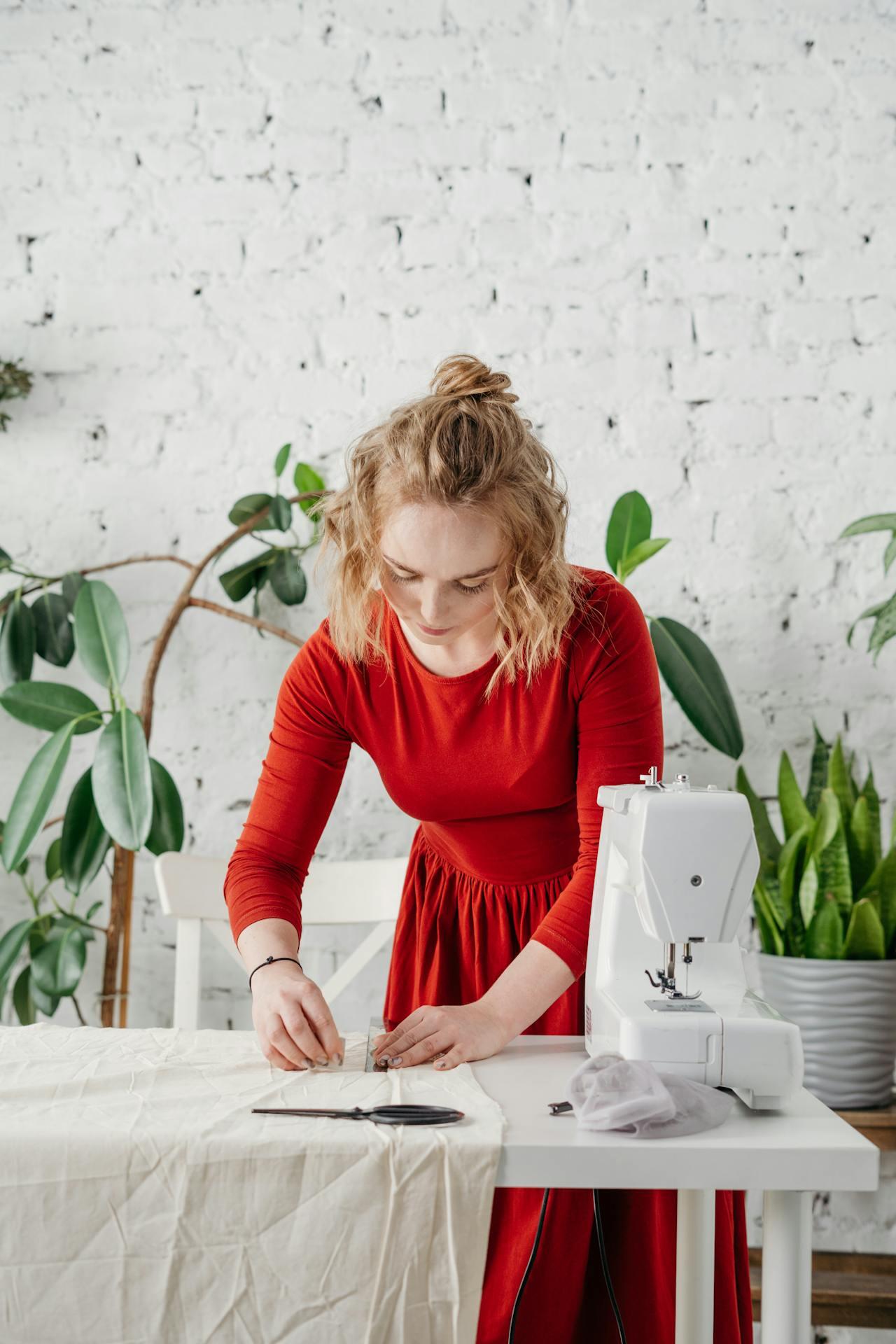
At first, it might be intimidating to use a guided sewing pattern or start your own sewing project, but remember that you can find a lot of tutorials, sewing blogs and videos on different online platforms to help you get started.
Whether you are sewing with a sewing machine or by hand, sewing can be a rewarding hobby or a long-term project to create your own brand of clothes or embroidery.
When starting a sewing project, it is noteworthy to have all the necessary tools and start learning the basic stitches.
Building your own sewing room can be a good start to being more organised and enjoying this new craft. Among the most important tools, you will at least need the following to get started:
If you are starting a more complex project, you might consider more tools to get the job done:
- A sewing machine
- Presser-foot attachment for use with your sewing machine
- a Thimble (a specific tool used as a protective device for sewing)
Once you gather most of these tools, you will be ready to start your first sewing project or hobby! If you still find it difficult to start this project alone, you can always find a Superprof tutor to help you get started. On the other hand, if you are already in the sewing business and need complementary help for a hard type of stitch or want to learn a specific kind of stitch from a particular culture, you can certainly find an experienced sewing tutor through our platform.
Don't wait any longer! While you immerse yourself in the history of sewing, get down to business and launch your sewing project with a sewing tutor today!

